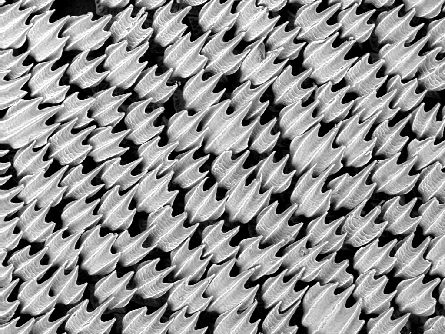Correct. What the pattern does is break up the friction layer so the majority of the air passing is undisturbed. When wet flow high speed video is replayed in slo-mo it shows on a smooth surface there is quite a bit of disturbance from vortices created from the air next to the surface dragged slower, and this has a negative effect on the CFM of flow as well as the velocity (speed) as it is a bit "jumbled up". When the same video is done with the textured surface it acts like tiny ball bearings breaking the drag, or resistance so only a tiny outer portion shows disruption....the vast majority is intact and undisturbed. Think a sharks skin. Natyres most perfect friction proof surface feels like sand paper, and here is what it looks like magnified:

Or the stepped hulls of race boats do similar.
Now if you go to aggressive in depth and design, you loose any of the gains from the texture, so it is quite the science.
Now on the throttle bodies, we vary the shape, aggressiveness, depth depending on if the throat section needs to be slowed, blended, or left alone (as where there are deep dips and peaks as this can have a negative effect on tip-in). The goal is much crisper quicker throttle response and power throughout the band.
The least effective end result is the LLT GM DI V6, and the best is the Corvettes with straight air intakes (those with a 90* bend like the V and Camaros, etc. are a bit less than the same engine in the C5 & C6 corvette where the intake bridge is straight).
But all have some pretty remarkable throttle response improvements, and the hesitation many V6 DI engine experience between 1000-2000 RPM disappears as well.
Mike has a RX TB for his V, see how it responds.